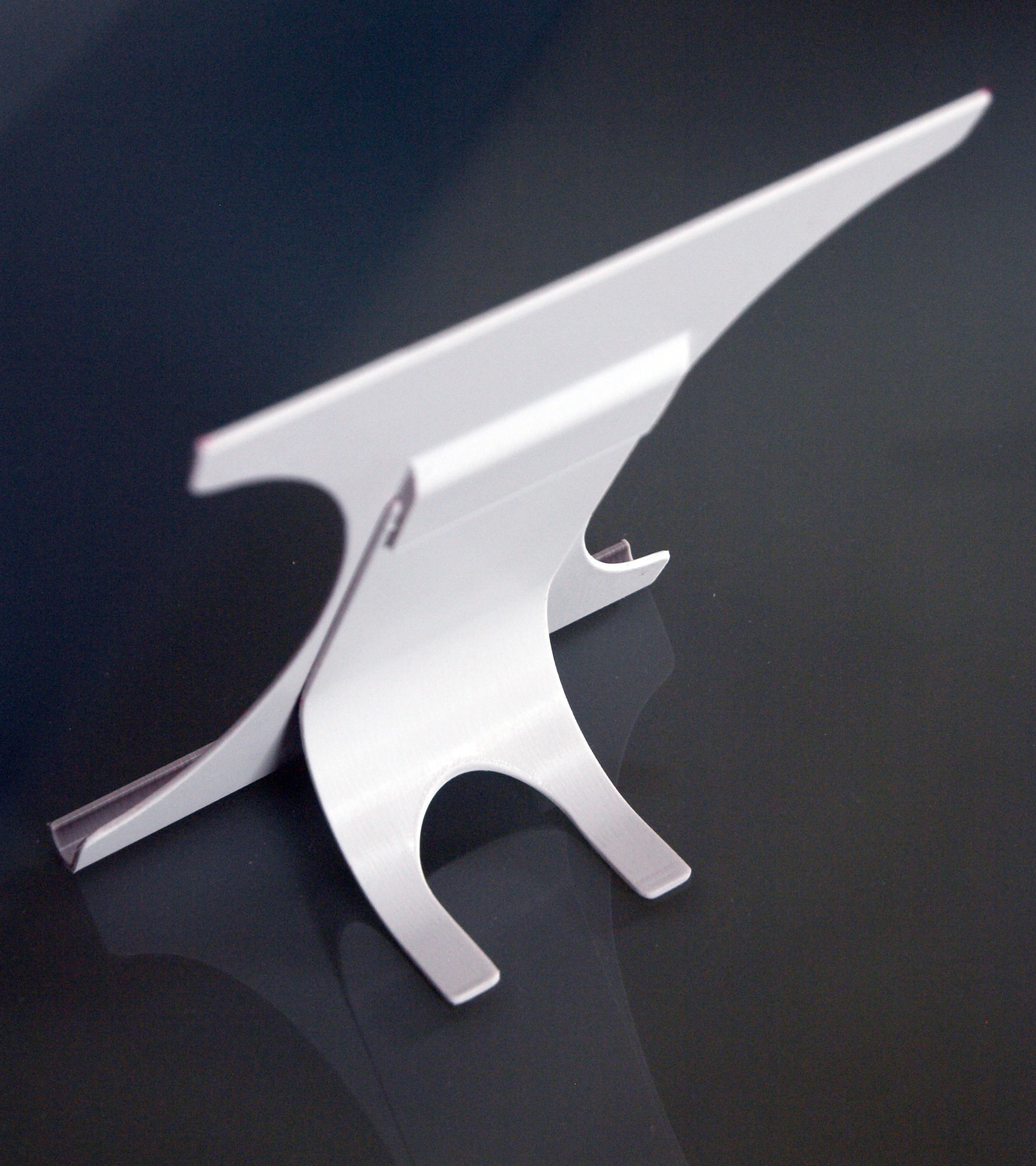
Document Stand 3D print model
I occasionally need one of these to hold a paper or few for reference or transcribing, but never got around to ordering one. Now, while quarantining from the Covid virus, I took the time to design and make one, and my 3D printer has just enough capacity to make it work. I did have to reduce the width 7½” to fit the 8” Z-height, and place the backboard diagonally on the build plate. The two parts fit easily, and were printed with Tiertime Grey PLA (the color is actually more like Eggshell, a very light grey), in 0.35mm layers; backboard and stand are 0.10” thick, with 99% fill.
Backboard 7-1/2” x 11-1/8” x 5/8” (at bottom lip) 181gmStand 3” x 6-3/4”x 3” (overall) 73gm
This piece is designed specifically for one position, so it’s very simple, with no angle adjustment; I just mocked it up and measured the tilt I liked. My studio is small, so I also needed this to be visually lightweight. Plus, generally, the times I wish I had one, there’s already a lot of stuff spread out on my desk (papers, pens, notes, sample chips, etc…), and the holder had to easily straddle the mess, and stand steady and level, so a minimal footprint was desirable. And it needed to be two parts, for easier, out-of-sight storage. This one provides everything I wanted, and worked perfectly on the first print...!
To assemble, the stand slides into a keeper on the backboard, and is secured by a snap-lock; the raised ridge on the stand fits into a groove inside the keeper . It seats with a satisfying click, and because it’s printed in 0.35mm layers, the parts sort of mate together horizontally, too. Both backboard and stand are cutout wherever possible, leaving just the support lip and two slim feet touching the desk, making it easy to maneuver into position around whatever else is on the desk. One thing to be aware of: the 30° slope is a steeper angle than what’s generally available in fixed-position document holders. To obtain other angles, if you have the CAD capability, the stl could be directly modified; if printed in PLA, with some judicious heating, the feet could be bent downward to change the angle.










